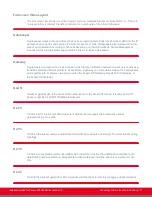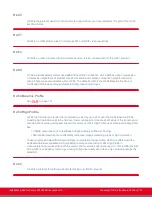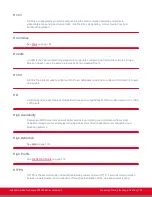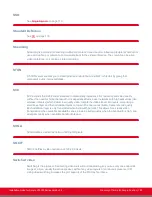
SSO
Standard Definition
Streaming
Streaming is a method of delivering multimedia content in one direction. Streaming recipients cannot not
use a microphone or camera to communicate back to the videoconference. The content can be a live
videoconference, or it can be a stored recording.
STUN
A STUN server enables you to directly dial an endpoint behind a NAT or firewall by giving that
computer’s public internet address.
SVC
SVC extends the H.264 codec standard to dramatically increases error resiliency and video quality
without the need for higher bandwidth. It is especially effective over networks with high packet loss (like
wireless networks) which deliver low quality video. It splits the video stream into layers, comprising a
small base layer and then additional layers on top which enhance resolution, frame rate and quality.
Each additional layer is only transmitted when bandwidth permits. This allows for a steady video
transmission when available bandwidth varies, providing better quality when the bandwidth is high, and
adequate quality when available bandwidth is poor.
SVGA
SVGA defines a video resolution of 800 x 600 pixels.
SQCIF
SQCIF defines a video resolution of 128 x 96 pixels.
Switched video
Switching is the process of redirecting video as-is without transcoding, so you see only one endpoint's
image at a time, usually the active speaker, without any video layouts or continuous presence (CP).
Using video switching increases the port capacity of the MCU by four times.
Installation Guide for Scopia XT5000 Series Version 3.2
Glossary of Terms for Scopia Solution | 180





































